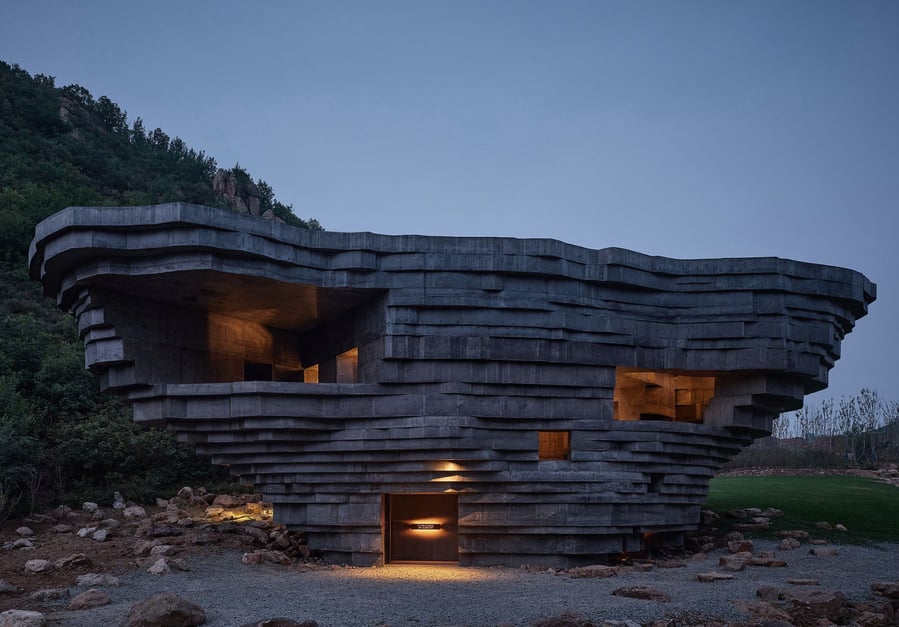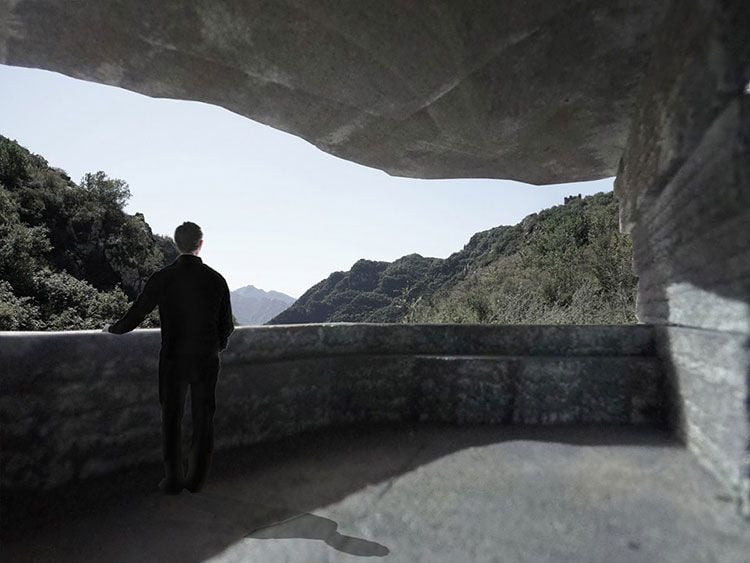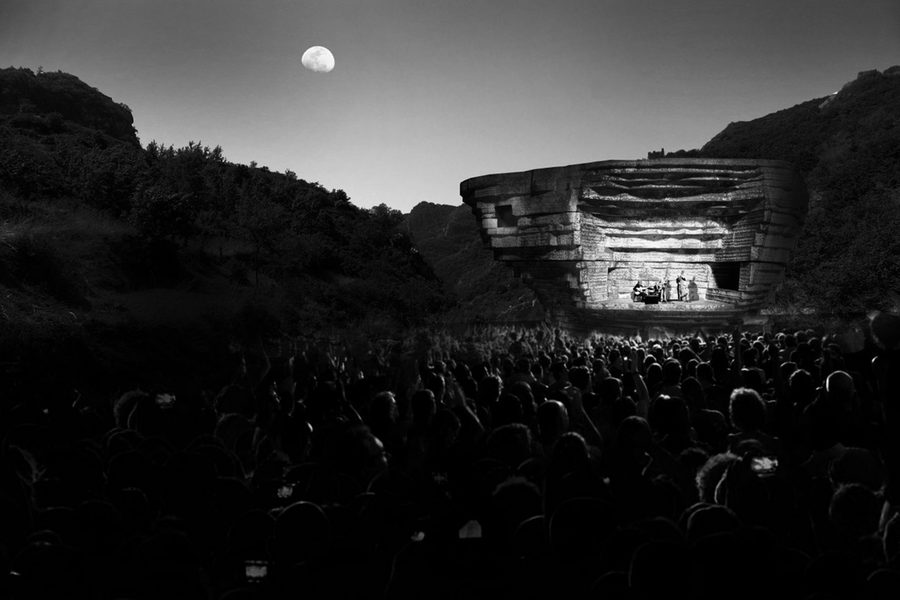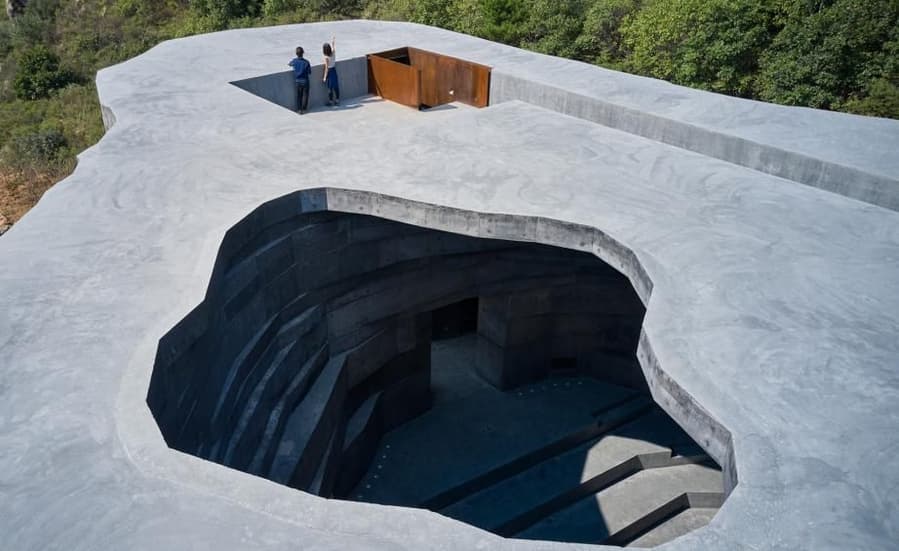OPEN Architecture’s “Chapel of Sound” Concert Hall Rocks
Modern architecture often aims to create a symbiotic relationship between a manmade structure and its surrounding environment – but rarely does it resemble its surroundings so much that it’s almost completely camouflaged.

Such is the case with The Chapel of Sound, a recently completed open-air concert hall near the Great Wall of China outside Beijing. Brought to life by the dynamic firm OPEN Architecture, the towering structure may resemble a pile of rocks, but its elegance and monolithic mien are anything but simple. Situated perfectly within a mountainous valley, the concert hall seems to grow out of the very Earth beneath it, organically shaping itself into the surrounding countryside.

Yet, upon closer inspection, The Chapel Of Sound begins to take shape as its own distinct entity: an open-air amphitheater and outdoor stage meant to amplify acoustics beautifully. Despite its appearance, the hall is not built from piles of rock, but from layers of a truly unique type of concrete. Namely, the material used was itself combined with an aggregate made from local stone. In that sense, the structure is literally was borne of its surroundings, an inherent part of the area’s distinct natural landscape.

OPEN Architecture’s founders Li Hu and Huang Wenjing were very aware of the valley’s unique surroundings when constructing the Chapel of Sound, taking great care to make the structure feel at home. “The symphony of nature is what we really wanted people to experience here,” the pair recently said in an official statement.
The composition of the structure is layered, almost like a multi-tiered cake. Though appearing to be a solid structure, the chapel is actually comprised of two distinct shells: an inner and an outer, with a distinct space in between that acts as a truss.


But it’s the interior of the concert hall that sets it apart. Truly open air, a wide, circular opening in the ceiling allows for sunlight to stream into the space, illuminating the artists as they perform. This “void” also allows for other natural elements like wind and rain to enter the space. Don’t worry about getting wet, though. As the rain falls, the clever drainage system works to ensure it disappears – a pretty neat trick.
The opening in the ceiling is just one of many throughout the structure. There are several such openings around the rock-like space, all designed to enhance and amplify the concert hall’s acoustics, with no need for the addition of more traditional sound-absorbing materials. The Chapel’s open spaces also serve the dual purpose of further connecting it to its environment, completing its unique synchronicity with the surrounding landscape.


Inside, staircases wend their way through the cavernous interior, leading to a rooftop platform that offers stunning views of the valley below, including the nearby Great Wall.
While The Chapel of Sound’s métier is ostensibly that of music venue, the creative OPEN Architecture duo also intend for it to be a contemplative space, a place where visitors can really feel a connection with the surrounding area. “Solitary or communal, music or sound of nature, gazing into the starry sky or connecting with one’s inner self — it’s open to the interpretation of the users,” Huang explains.

With its distinctive monolithic appearance and cavernous indoor space that, despite its exposure to elements, evinces a feeling of intimacy and warmth, the newly opened Chapel of Sound outside Beijing is sure to be a marvel of the mountainside for years to come, impressing visitors with a natural beauty that goes far beyond just a simple pile of rocks.




